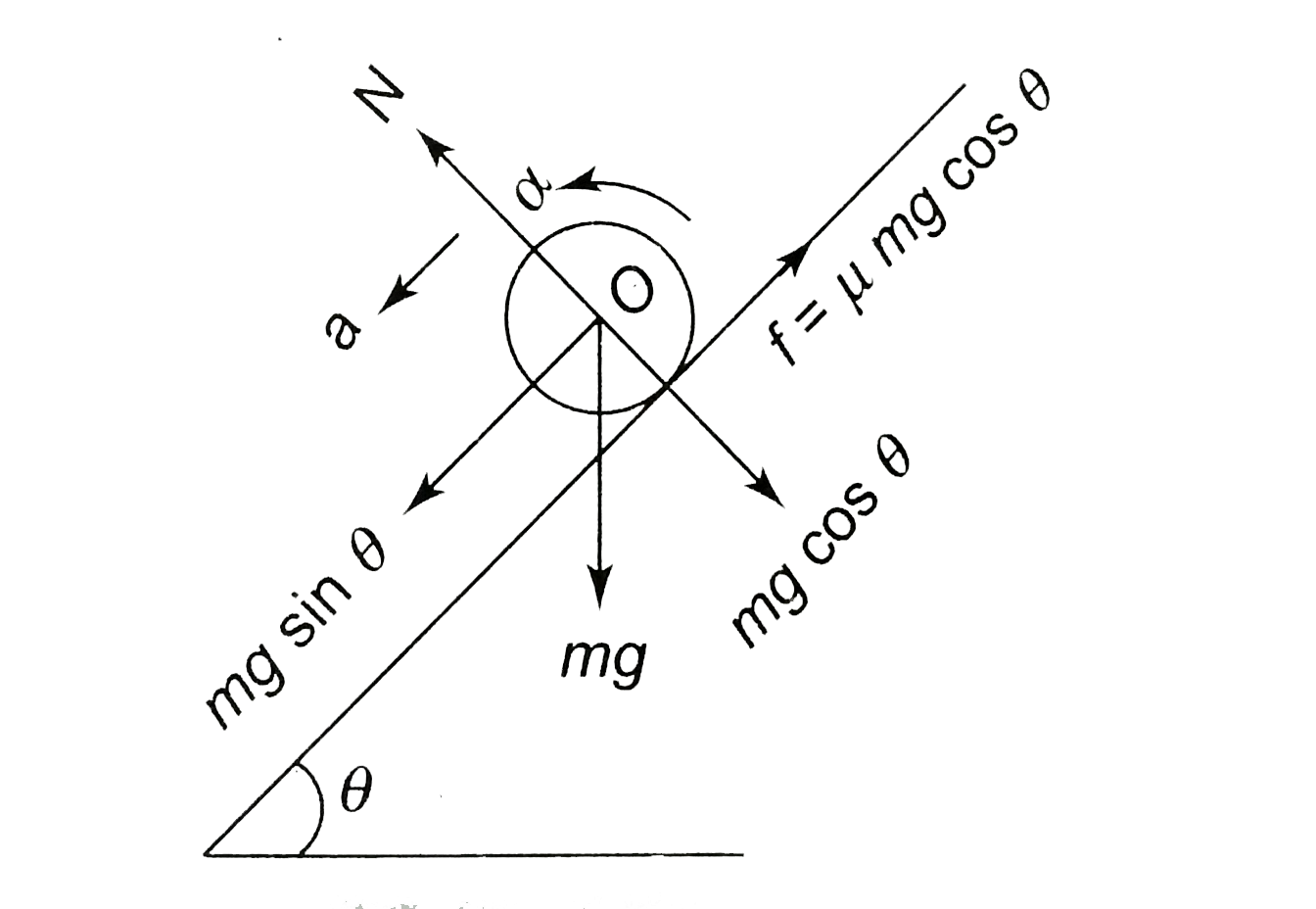A ring, a solid cylinder and a solid sphere, all having same mass and radius, are placed at the top of an incline and released. The friction coefficents between the objects and the incline are same and not sufficient to allow pure rolling.
(a) Which body will reach the bottom first?
(b) Which body will have the minimum kinetic energy at the bottom?

Case of impure rolling, f=fmax=μmgcosθ
mgsinθ−μmgcosθ=ma
a=gsinθ−μgcosθ
s=ut+12at2=0+12at2
t=√2sa
v=u+at=0+at=at
(a) Acceleration will be same for all bodies, hence they will reach at the bottom in same time with same linear kinetic energy.
(b) τ0=fR=Iα
α=fRI
ω=ω0+at=0+fRIt
KR=12Iω2=12×I(fRtI)2
KRα1I
The body with maximum moment of inertia will have minimum rotational kinetic energy at the bottom.
Hence the ring will be with minimum kinetic energy at the bottom.
Topper's Solved these Questions
Similar Questions
A solid sphere, a ring and a disc all having same mass and radius are placed at the top of an incline and released. The friction coefficient between the objects and the incline are same but not sufficient to allow pure rolling. Least time will be taken in reaching the bottom by
View SolutionA solid sphere, a ring and a disc all having same mass and radius are placed at the top of an incline and released. The friction coefficient between the objects and the incline are same but not sufficient to allow pure rolling. Least time will be taken in reaching the bottom by
View Solution
Knowledge Check
- Question 1 - Select One
A solid sphere, a hollow sphere and a disc, all having same mass and radius, are placed at the top of an incline and released. The friction coefficients between the objects and the incline are same and not sufficient to allow pure rolling. The smallest kinetic energy at the bottom of the incline will be achieved by
Athe solid sphereBthe hollow sphereCthe discDall will achieve same kinetic energy. - Question 2 - Select One
A solid sphere a hollow sphere and a disc all having same mass and radius, are placed at the top of a moth incline and released. Least time will be taken in reaching the bottom by
Athe solid sphereBthe hollow sphereCthe discDall wil take same time - Question 3 - Select One
P is a solid sphere and Q is a hollow sphere both having the same mass and radius .If they roll down from the top of an inclined plane , on reaching the bottom .
AVelocity of P is moreBVelocity of Q is moreCVelocity of P = velocity of QDNone
A solid sphere , a hollow sphere and a disc , all having same mass and radius , are placed at the top of an incline and released . The friction coefficient between the objects and the incline are same and not sufficient to allow pure rolling . Prove that time taken in reaching the bottom is same for all .
View SolutionA nollow sphere and a solid sphere having same mass and same radii are rolled down a rough incline plane.
View SolutionA solid sphere and a solid cylinder having the same mass and radius, rolls down the same incline. The ratio of their acceleration will be
View SolutionA solid cylinder and a solid sphere, both having the same mass and radius, are released from a rough inclined plane of inclination θ one by one. They roll on the inclined plane without slipping. The force of friction that acts
View SolutionA solid sphere, disc and hollow sphere of same masa and radius are placed at the top of an inclined plane. Surface is sufficiently rough to provide pure rolling. All the objects are released from a state of rest.
View Solution

